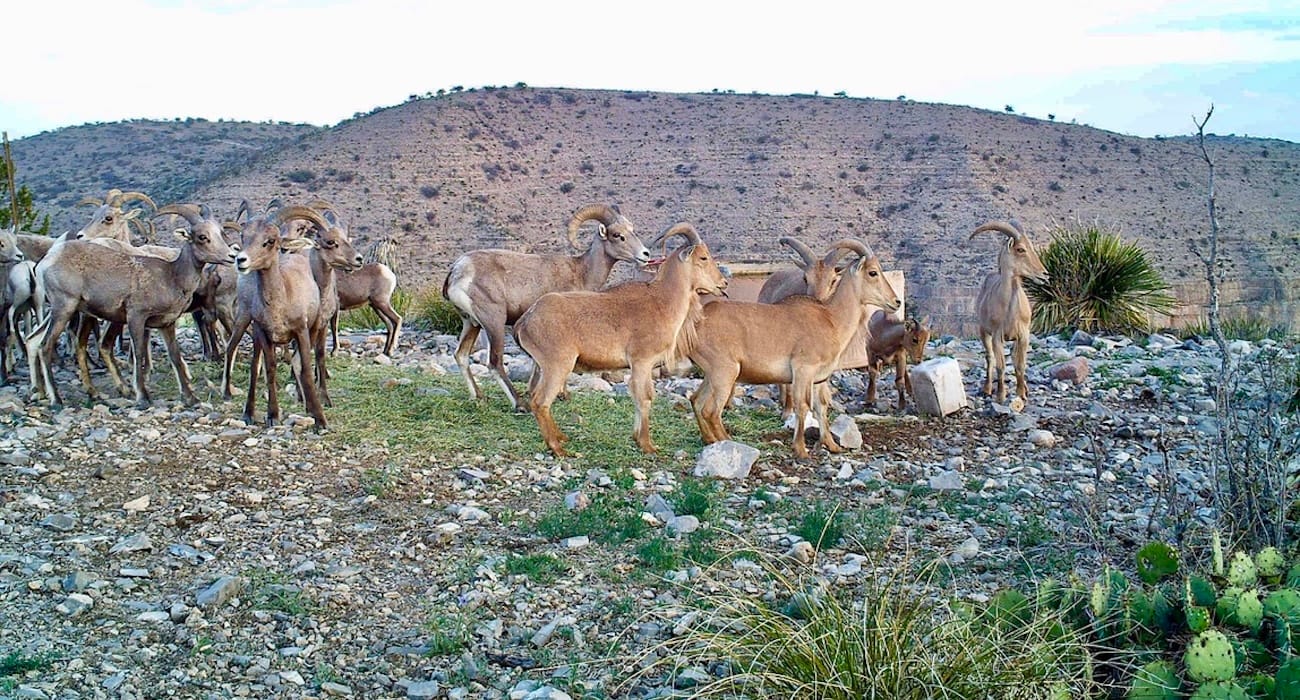Invasive Species vs. Native Species

Presented below is a scholarly article on the issue of whether so-called invasive ‘exotic’ species like feral pigs, goats, buffalo, and horses, are by definition harmful to environments in which they did not evolve, or from which they disappeared – often because of human impacts including overhunting. An example is the ‘need’ to exterminate far-West Texas aoudad to ‘help’ desert bighorn, and its habitat, pictured together above. This belief is the foundation of Invasive Species Biology, and its War on Wildlife, so often discussed on this blog.
Paraphrasing the authors in an attempt to simplify their difficult academic wording, they say that:
- By definition, so-called ‘exotics’ are expected to have bigger impacts than noninvasive introduced species.
- They found “no evidence” that where animals came from (native vs non-native) correlates with animal effects.
- …”Pleistocene animal communities (2.6 million to 11,700 years ago) contained many more large bodied herbivores than contemporary ecosystems especially in the Americas and Europe…”
- If by definition the desired state excludes any animal not found recently, then any introduced species changes desired state.
- However, if the desired state is one in which the ecosystem function of large mammalian herbivores is restored or maintained, then introduced species can work, because as they put it, non-natives and natives have similar effects on plant diversity, plant abundance, and ecosystem function.
- Non-natives can help suppress fire by removing litter – and many other things GOOD or BAD.
- The issue is management of the animals themselves according to the conditions that prevail – NOT the pedigree of the species as in where did the animals evolve.
- They conclude that non-natives are very useful in restoring systems, but they must be managed correctly because natives and non-natives can all do harm.
The entire article appears below and is worth reading notwithstanding its difficult wording.
NOTE: the paper below was originally published to Science.org
Native and introduced megaherbivores similarly affect plant diversity and abundance
(available here ->)
—
For more posts like this, in your inbox weekly – sign up for the Restoring Diversity Newsletter
